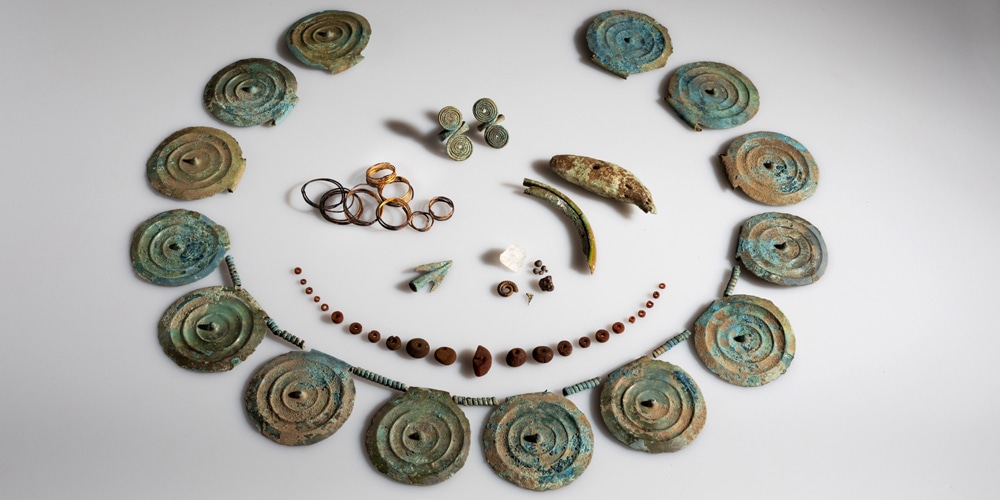Mě se líbí, jak to preparujou z té hlíny 👍👍
Carrots replaced by a rare treasure trove of Bronze Age jewellery
Categories: Nálezy nejenom s detektorem v západní Evropě
An amateur archaeologist - a volunteer worker found with his metal detector in a freshly harvestedm and ploughed carrot field near Güttingen, Switzerland, a 3,500-year-old hoard of ladies' jewellery. It contains gold and bronze ornaments, rings, amber beads and many other items.
Franz Zahn discovered the collection this August while walking through a ploughed carrot field with the permission of its owner. As soon as he saw the first bronze discs in the ploughed soil, he immediately realised, as an experienced detectorist, that this was a valuable archaeological find. As he had already discovered several Iron Age and Bronze Age objects in the past, he immediately contacted the Thurgau Archaeology Office.
Since similar discs are sometimes found on chains in graves or ritual deposits, archaeologists were quickly dispatched to the site. The following day, the site of the find was retrieved in one 50 x 50 x 50 cm soil block. No evidence of burial was discovered in the process. It was therefore apparently a depot that had been deposited on the site, perhaps in a leather bag or some organic container, the remains of which were not preserved.
The complete soil block was taken to the conservation workshop in Frauenfeld for extraction of the objects under laboratory conditions. Each layer was carefully documented in order to determine how the assemblage came to be in the ground, and what the original relative arrangement of the jewelry and other artifacts was. A similar assemblage had already been discovered two years earlier near Etzwilen, so the respondents applied the experience gained here.
A total of 14 bronze "spiked" discs (due to the pointed thorn in the middle) with three concentric circles were uncovered. A string or leather cord was threaded through a hole on each of the discs. Spirals were strung between the rings as spacers. Altogether, the set contained eleven bronze and eight larger gold wire spirals weighing 21 grams.
There were also rings and very small amber beads. Surprising finds included a bronze arrowhead, a beaver tooth and perforated bear tooth, a rock crystal, a fossilized shark tooth, a small ammonite, and several pieces of polished iron ore. Objects of this type may have been considered medicinal and protective; they may also have been worn as a kind of amulet.
The depot dates from a time when important advanced cultures flourished in the Mediterranean region. Almost no settlements are known from this period in the Thurgau canton. In Güttingen, a large Bronze Age settlement with rich finds was excavated a few years ago in the area of the 'Mouse Tower', but this dates back to around 1000 BC.
Preservation is currently underway as some of the artefacts are very delicate and need to be treated before display. In parallel, a number of scientific analyses are underway. The collection should be exhibited next year at the Archaeological Museum in Frauenfeld. The Archaeological Office expressed its gratitude to the finder and the owner of the site.
Video
Roman Nemec
Sources: tg.ch, thehistoryblog.com

full file

removal of the block of soil with the treasure

in the laboratory
The article is included in categories:



